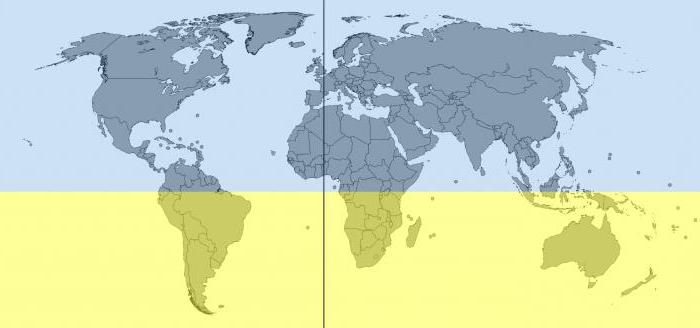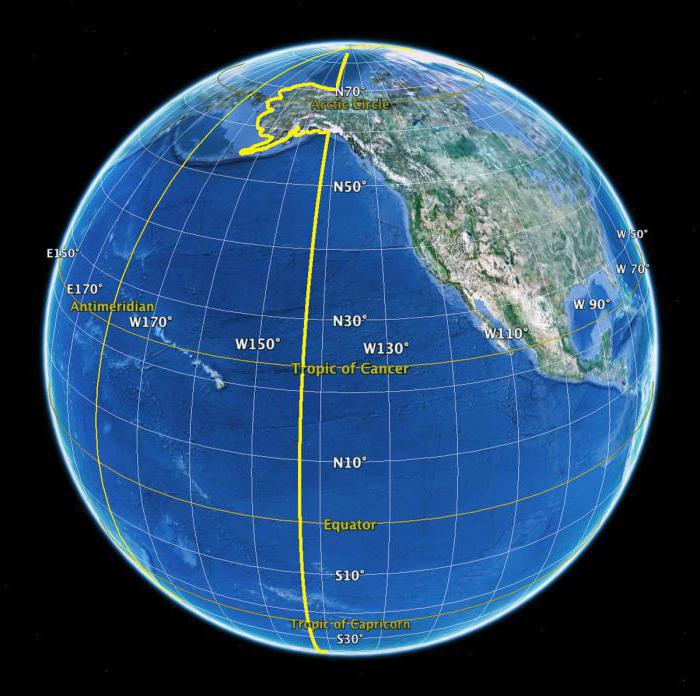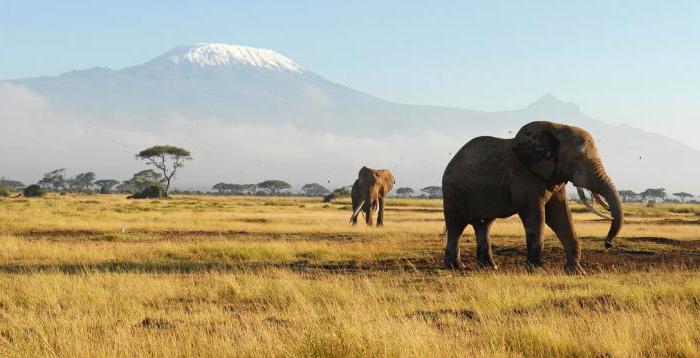The hemisphere of the Earth. Characteristics and features
Our planet is conditionally divided into four hemispheres. How are the boundaries between them? What are the features of the hemisphere of the Earth?
Equator and meridian
The planet Earth has a slightly flattened shapepoles of a sphere-spheroid. In scientific circles, its form is usually called a geoid, that is, "like the Earth." The surface of the geoid is perpendicular in the direction of gravity at any point.
For convenience, the characteristics of the planet are usedconditional, or imaginary, lines. One of them is the axis. It passes through the center of the Earth, connecting the upper and lower parts, called the North and South Pole.

Between poles, at an equal distance from them,there is the following imaginary line, called the equator. It is horizontal and is a separator to the South (all below the line) and the North (all above the line) hemisphere of the Earth. The length of the equator is just over 40 thousand kilometers.
Another conditional line is Greenwich, orPrime Meridian. This is a vertical line passing through the observatory in Greenwich. The meridian divides the planet into the Western and Eastern hemispheres, and is also the starting point for measuring geographical longitude.
The difference between the Southern and Northern Hemispheres
The equator line horizontally divides the planetin half, crossing several continents. Africa, Eurasia and South America are partly located in two hemispheres. The other continents are located within one. So, Australia and Antarctica are completely in the southern part, and North America - in the north.
The hemispheres of the Earth also have other differences. Thanks to the Arctic Ocean on the pole, the climate of the Northern Hemisphere is generally milder than the Southern one, where the land is located - Antarctica. Seasons on the hemispheres are opposite: the winter in the northern part of the planet comes simultaneously with the summer in the south.
The difference is observed in the movement of air and water. To the north of the equator, river currents and sea currents deviate to the right (on the right banks of rivers are usually steeper), anticyclones rotate clockwise, and cyclones - against. To the south of the equator, everything is exactly the opposite.

Even the starry sky above your head is different. The pattern in each hemisphere is different. The main reference point for the northern part of the Earth is the polar star, in the Southern Hemisphere the Southern Cross is the reference point. The land is higher than the equator, therefore the majority of people live here. Below the equator, the total number of inhabitants is 10%, since the oceanic part prevails.
Western and Eastern hemispheres
To the east of the zero meridian is theEastern hemisphere of the Earth. In its limits is Australia, most of Africa, Eurasia, part of Antarctica. About 82% of the world's population lives here. In the geopolitical and cultural sense, it is called the Old World, as opposed to the New World of the Americas. In the eastern part is the largest peninsula, deep trough and the highest mountain on our planet.
The western hemisphere of the Earth is in the west ofGreenwich meridian. It covers the North and South America, part of Africa and Eurasia. It completely includes the Atlantic Ocean and most of the Pacific. Here is the longest mountain chain in the world, the largest volcano, the driest desert, the highest mountain lake and the full-flowing river. Only 18% of the population lives in the western part of the world.
Date change line
As already mentioned, the Western and Easternthe hemisphere of the Earth is divided by the Greenwich meridian. Its continuation is the 180th meridian, which delineates the border from the other side. It is the line of change of dates, it is here that today turns into tomorrow.

On both sides of the meridian are recorded differentcalendar days. This is due to the features of the rotation of the planet. The line for the change of dates mostly passes through the ocean, but also crosses some islands (Vanua Levu, Taviuni, etc.). In these places, for convenience, the line is shifted along the land border, otherwise the inhabitants of one island would exist in different dates.







